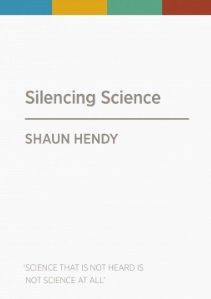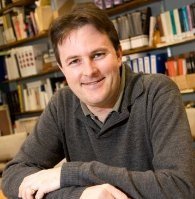The new book Silencing Science, by University of Auckland physicist Professor Shaun Hendy highlights some recent examples of where scientists have been missing in action when the public needed their knowledge and insights the most.
 I can personally relate to this. During the Fonterra botulism scare, the 2014 Yersinia outbreak and for periods in the wake of the Christchurch earthquakes, we struggled at the Science Media Centre to find experts who were willing to offer commentary to the media about what was going on.
I can personally relate to this. During the Fonterra botulism scare, the 2014 Yersinia outbreak and for periods in the wake of the Christchurch earthquakes, we struggled at the Science Media Centre to find experts who were willing to offer commentary to the media about what was going on.
Journalists were calling us asking for independent experts who could inform their reports. These were senior reporters who had a genuine interest in informing the public and they took their job of explaining the risk and uncertainty seriously.
We knew the people who had the expertise and the media training to handle these queries. But they were either instructed not to speak to the media or opted out due to concern for upsetting their management or funders.
In times of crisis, the first instinct is to pull up the drawbridge and funnel all communication through a carefully vetted, central source. But in today’s media environment, that is increasingly a flawed strategy. The examples Hendy catalogues show that it often does more harm than good.
The vacuum will be filled
 Journalists require diversity of sources – they won’t quote the same official over and over for long. This doesn’t mean that they want duelling experts – scientists who contradict each other and appear to be in conflict.
Journalists require diversity of sources – they won’t quote the same official over and over for long. This doesn’t mean that they want duelling experts – scientists who contradict each other and appear to be in conflict.
They know that their audience tires of hearing the same carefully prepared messages delivered by the same people. That’s why experts like Dr Mark Quigley and Professor Kevin Furlong had so much airtime post quakes.
A media vacuum will be filled by someone. If the sole source during a crisis is a government official or chief scientist, the media will seek out others in its desire for diversity of sources. If other scientists won’t step up, someone else will and they may spread misinformation or pseudoscience.
More experts need to be authorised and encouraged to front to the media in times of crisis. That was actually a finding of the inquiry into the Fonterra – botulism crisis.
It simply means that if the top experts in the country are drawn into an emergency response, or to review an incident, at least some of them are cleared to talk about the basic science relating to the issue and their fields of experience.
Government departments have learned from what happened with Fonterra and are increasingly trying to accommodate this in their risk communication strategies. The next big science-related crisis will be the test of how far they’ve come.
When experts censor themselves
But more insidious than the high profile examples Hendy references is the self-censorship experts regularly engage in. A lot of scientists we approach for comment decline to do so because they don’t want to rock the boat. It is easier to say no and eliminate the risk of making a mistake, being misquoted or wading into territory sensitive to managers or commercial clients.
This is particularly an issue when it comes to Crown Research Institutes, which hold large research contracts with companies and provide services for the government.
Even a seemingly innocuous query on basic science can be deemed too sensitive because it may open the way for discussion that strays into commercially sensitive or politically problematic territory.
This doesn’t need to be the case. Scientific institutions can have confidence in their scientists to communicate their basic science and to stay on message.
This is not a utopian goal. Scientists simply need to have clearly stated communication protocols and the support and necessary training to effectively engage with the media. But more fundamentally, they need to believe that their managers actually buy into science communication efforts and are willing to accommodate their media engagement activities.
We have the opportunity to address many of the issues Hendy has raised.
Platform for change
The Royal Society of New Zealand’s Researcher Guidelines for Public Engagement will soon be finalised and will offer useful advice experts can follow when engaging with the public, be it via the mainstream media, social media or in front of a town hall meeting.
But the guidelines won’t work in isolation. They need to be accompanied by efforts in research institutions to align internal communications protocols with the guidelines and make sure everyone understands them.
The Government’s A Nation of Curious Minds work stream, of which the Science Media Centre is but one project, offers numerous opportunities for and encouragement of scientists to engage the public.
The National Strategic Plan for Science in Society, which underpins Curious Minds, has the stated goal:
“Ensure emerging and established scientists and technology researchers have the basic communication skills to make their research accessible to relevant audiences beyond their peer community.”
Reaching those audiences still relies to a large extent on working with the mainstream media. As my colleague Fiona Fox, the founder of the UK Science Media Centre has so often said and which Hendy quotes in his book: “the media will do science better when science does the media better”.
Most institutions would argue that they are doing what is outlined in the Government’s strategy. But some need to do better. Too many experts aren’t confident talking to the media and feel that stepping into the public arena on controversial issues is a losing game.
They need greater support from above, which along with appropriate training will give them the confidence to navigate those commercial and political issues while satisfying the public’s thirst for information.
Scientists enjoy a high level of trust in New Zealand. The key to maintaining that trust as we face a growing range of complex science-related issues, is timely and ongoing engagement with the public from a multitude of experts that feel empowered to communicate.
The Science Media Centre runs the Science Media SAVVY media training programme with events held all over the country. Contact the SMC to enquire about holding a workshop in your region.